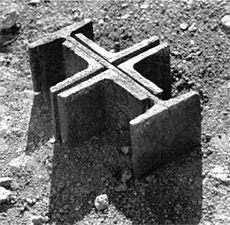
340 buildings are competing for the European Prize for Architecture
Source
Markéta Pražanová, tisková mluvčí České komory architektů
Markéta Pražanová, tisková mluvčí České komory architektů
Publisher
Tisková zpráva
23.12.2008 17:55
Tisková zpráva
23.12.2008 17:55
 |
The Mies van der Rohe Foundation in Barcelona announced on Friday the list of all 340 buildings that were nominated for the Mies van der Rohe Award 2009 during the past months. The best projects built over the past two years in Europe were proposed by independent experts specializing in contemporary architecture, professional institutions, and other invited organizations from all EU member states. Our experts included Osamu Okamura, editor-in-chief of the magazine Era 21, Yvette Vašourková from the Center for Central European Architecture, and the institution was represented by the Czech Chamber of Architects.
The Czech Republic has participated in the competition regularly since 1997. Over the years, five Czech projects have made it to the finals, which usually features around 40 selected buildings, placing us among the more successful countries of the former Eastern Bloc in this regard.
In 2009, these eight Czech buildings will compete for the Mies van der Rohe Award:
Faculty of Information Technology VUT in Brno (author: Burian - Křivinka Architectural Office);
Hotel Metropol (author: Chalupa Architects / Dum Architects);
Hráň u Slavonic (author: e-M.R.A.K. - Martin Rajniš Architectural Office);
Dox - Center for Contemporary Art (author: Ivan Kroupa Architects);
New Headquarters ČSOB (author: AP Atelier - Josef Pleskot);
Family House in Černošice (author: Ksa);
Residential Complex Na Krutci (author: Kuba & Pilař Architects, DRNH);
Center for Ecological Activities Sluňákov (author: Projektil Architects).
The Mies van der Rohe Award is one of the most prestigious international exhibitions of contemporary architecture. The purpose of the competition is to reward significant creative achievements, support new ideas and technologies, and demonstrate the significant role that architecture plays in shaping European society and culture and how it influences the quality of life. The award, given every two years, consists of a monetary prize of 60,000 euros for the winner, and the holder of a special prize for emerging architects receives 20,000 euros. Previous winners include internationally recognized figures in the contemporary architectural scene such as Mansilla + Tuñón (2007), OMA - Rem Koolhaas, Ellen van Loon (2005), Zaha Hadid (2003), Rafael Moneo (2001), Peter Zumthor (1999), and Dominique Perrault (1996).
The Foundation has also published the list of expert jurors, whose challenging task will be to evaluate all 340 projects, select finalists, and then choose the winner. The eight-member jury includes selected experts from across Europe. They include Luis M. Mansilla - last year's winner (Madrid), Francis Rambert (Paris), Lluís Hortet (Barcelona), Ole Bouman (Rotterdam), Fulvio Irace (Milan), Vasa J. Perović (Ljubljana), Carme Pinós (Barcelona). For the first time in the history of the competition, a representative of the Czech Republic has also become a member of the commission. The Mies van der Rohe Foundation has selected architect Irena Fialová, a leading Czech architectural theorist, journalist, co-founder of the publisher Zlatý řez, who also teaches at the Faculty of Architecture of the Czech Technical University.
The jury will meet for the first time in February next year, and the results of the competition will be announced in May.
All buildings, including illustrations, are available at www.miesarch.com
The English translation is powered by AI tool. Switch to Czech to view the original text source.
0 comments
add comment









